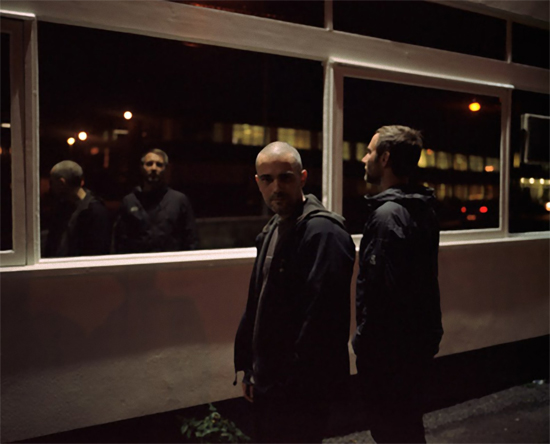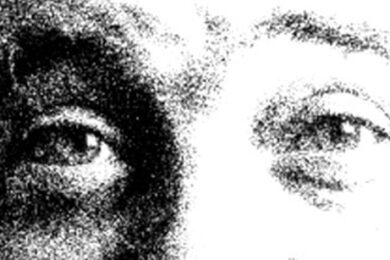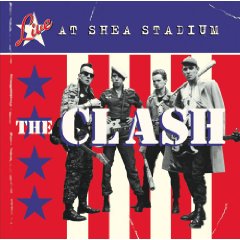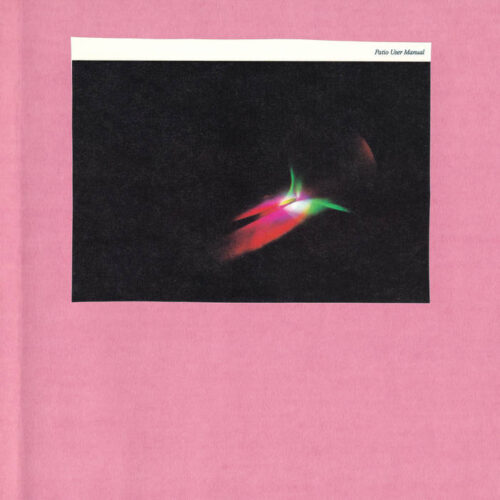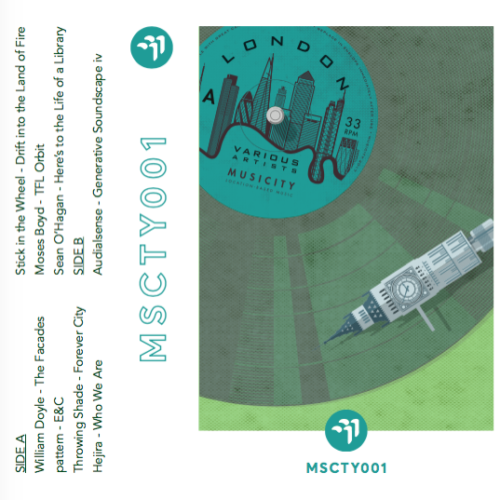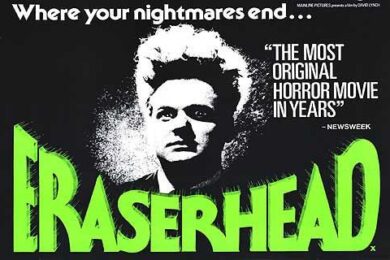It might have already been out for several months, but Autechre fans are only just starting to recover from the deluge that was this year’s Exai. A sprawling double album touching on nearly every aspect of the veteran duo’s current remit, it wasn’t the kind of record you’d be expected to process in a single sitting by any means.
Extraordinarily dense, even for them, Exai courted the same curiosity and speculation that’s come to be expected of any Autechre release. Even long-term fans found themselves asking a host of questions: What is this sound? How can I get my head around it? How was it created? What is the meaning to these complex layers, these mind-warping algorithms, the abstract artwork and cryptic track titles? Is it just random noise? Is it the sound of the future? And how is it supposed to make me feel?
The thrill of the chase – the struggle to catch up and understand the answers to these questions – is often what keeps people returning to Autechre. Twenty years since the release of their debut album, Incunabula, the duo remain a puzzle to be solved, an enigma to be unwrapped, and it can take years, decades even, for some tracks and releases to sink in properly.
Rob Brown, one half of Autechre alongside Sean Booth, is acutely aware of the slow-burning appeal of much of their music. "It’s hard for us, because we put stuff out and we know [responses are] going to be a bit mental, especially when it’s dead long," he reflects. It’s been a while now since Exai‘s release, and we’re speaking on the eve of the release of its follow-up EP, L-event. "But we also know it’s the right stuff to be out at the moment for us. When somebody seems to understand and get that, it’s interesting. People from all walks of life [are] getting a grip on it, it’s just quite rewarding."
As a band, Autechre appear to understand acutely the unique relationship they hold with their audience, their critics and of course each other. "Sometimes we can get mislabelled with the slightly pompous, serious side of us, or the arms-length nature of how we are," says Brown. "[But] some tracks can cut through all that and people can really get it. Often you’ll see it on forums, where there’s enough of a cross-section of real people there that perhaps don’t earn a living from talking about music, so they’ve got a lot longer to digest a track before they talk about it, y’know? It’s not fair in a way, on journalists, the way they’ve got two weeks to check out a whole album. Then there’s Exai, which is as deep and long as that – we expect people to like it straightaway and it’s not really fair, so we totally get it, this weird dichotomy with the industry and the press and being an artist and an individual and a human being."
It’s possible to see the machine-made otherness of Autechre’s sound as an aural Rorschach test. Where one listener might hear nothing but random, cacophonous noise ("My wife says it’s just all pots and pans," jokes Brown), another might hear the sound of futuristic structures, inexpressively emotive landscapes or gravity-defying club environments for undiscovered lifeforms. Others might be intensely aware of a specific detail in a track; the way one sound morphs into another, or how a peculiar rhythmic pattern evolves. Each listener experience is unique, with the colourful descriptions they garner becoming so subjective they’re rendered almost futile.
Perhaps realising this, Brown remains largely guarded about his own understanding and interpretation of the music he makes. "There’s something quite naïve and childish about the way I personally see some of our tracks," he says. "Dare I say it, in the past it’s been levelled at us – landscapes, architecture, and blah blah blah. You can say that about any sound, I think. It’s stereoscopic sound – hearing vision, if you like. It’s bound in what’s 3D. Our minds decrypt what you can hear and interpret a reverb as a measurement. So if a certain reverb changing size would suggest a cave changing shape, bring it on."
So discussions of specific themes and concepts surrounding Autechre’s work are largely left to their listeners. While many would love to know what was being imagined or intended on a track like ‘Irlite get(0)’, Booth and Brown’s attachments to their work appear to stem from areas only they will ever know. "One thing that’s never really shared outwards is the biographical nature of the things we do," says Brown, "Everyone’s got that, y’know? Just the walk to work every day is biographical by a certain extent. Us sat here and doing what we do, and collaborating, and sharing ideas and tracks, and knowing each other really well for all this time, and trusting each other a lot for all these years."
This trust factor, Brown explains, has been integral to the pair’s working relationship since they were introduced while growing up around their local graffiti scene in Rochdale, Manchester. "I knew this guy who knew another guy, and it was all through tagging and graffiti," he recalls. "My guy said, ‘I’ve met someone that talks like you do about music – he says the same sorts of things’. He wasn’t musical, Jed, but he knew that me and Sean were the same kind of person, so to speak. He suggested to his neighbour that she brought him round, and I was like ‘What the fuck, this guy’s gonna steal all my records’. I thought he was a bit dodgy at first, ‘Who are these weird kids?’ – he was a bit younger than me.
"But I had decks and he was doing these tape edits," he continues. "So we had this thing where we had to trust each other straight away. I’d give him a load of records to edit together, but I might not have seen him again with my best Meat Beat Manifesto record I’d just bought, and stuff like that. We ended up collaborating straight off the bat, and we’ve been doing that ever since".
In the time since then, Autechre’s consistently exploratory and ever-evolving Warp discography has seen them acquire a reputation as electronic pioneers. Brown, however, is wary of that interpretation, insisting that the aim was never to participate in a futuristic arms race. "Sean and I always knew that what we were doing wasn’t supposed to be futuristic or brand new. We were just doing something that nobody had really heard before. It’s hard to phrase this, but we knew that we were different and we knew that we were special, but ‘pioneers’ was a word for people like Brian Eno and Kraftwerk and so on. So looking back, when a lot of people attribute that word to us, and then a load of other people go ‘Fuck off, it’s just the same old stuff they’ve been doing for twenty years’, I can see both sides.
"I guess we’ve never really set out to be ‘the future’," he reflects. "All we’re trying to do is communicate, really, it’s not about being difficult and saying ‘Aren’t we clever-looking because we’re this futuristic, clever-looking band that takes itself seriously, with strange names and cryptography and stuff like that. It’s a lot more personal than that. When people see through the more adverse elements, they’ll find their way into something they find quite personally rewarding. I think that’s just reaching minds."
Clocking in at just four-tracks, L-events is a relative drop in the ocean compared to its big brother. So what makes it unique? "The L-event material was written in the same period as Exai," explains Brown. "It differs in a few ways, but I’d say it’s part of the same genealogy. When the music’s as abstract as it is, you don’t really think, [upon starting a new project], ‘I want to write these lyrics, I’ve got something in my heart I need to say, vocally’, or ‘I’m all about industrial right now, I’m gonna make loads of brake-rubbing noises’. It’s a bit simpler – it’s more, ‘What have we not done previously?’"
It became obvious to the duo during the sequencing of Exai that the tracks gathered on L-event would better suit another release – "something that should be supplementary or augmenting the album in one way or another," reveals Brown. "It was material that shares the same dialect and the same language as the album, but remains specific to that one single release. Some of the tracks are perhaps a little bit more rude, a little more aggressive. With an album you can be a little bit more freaky, a bit weirder and deeper. Because Exai was such a big long thing, you’re up to your neck in it, basically. An EP gives a shorter exposure time, if you like, and I got wind that this short exposure meant you’re able to hit people with slightly more extreme stuff and it not take too much of a toll on anyone."
Indeed, L-event‘s release on a 12" format harks subtly back to the duo’s roots in breaks and hip hop culture, a history that can be easy to forget given Autechre’s often deeply abstract recent music. "With 12"s, it just felt like we’d grown up with a situation where club tracks end up on a 12", while more experimental tracks end up on an album," says Brown. "It often gives rise to a certain context, like being played in a club – whereas with albums we were brought up in the Walkman generation, where everyone we knew put headphones on and listened to them on their own, or kicked back with a joint and played it at a house party or something – more of a listening experience than a club party. So the whole notion of 12"s and singles and EPs has been formatted a little bit by that idea of clubbing – the format being available to DJs, and being a bit more of a public experience."
Each of the four tracks on L-event showcases a unique side to the band’s repertoire. With the aim of delving into the anatomy of an Autechre EP – a chance to peer beneath the bonnet, so to speak – I asked Brown to tell me a little about each track, and the various methods and mindsets that underlie the madness.
While reading, stream the whole of L-event via the embed below
‘tac Lacora’
Rob Brown: "With this one it was straight off the bat. It was obvious it was going to be fairly heavy and worthwhile to start the EP, or the start of a side if you will. Me and Sean, we tend not to play album tracks onstage. We make a live set for live set’s sake. We went on tour after Oversteps and we were building our own music software, our own machinery on the computer. The live set was built so we could be spontaneous, because we didn’t want to re-enact studio tracks on stage. It meant we could improvise with high-quality sound.
"This time we decided to try and get the synthesis in-board as opposed to outboard, with a big overhaul of the system and a re-design or a rethink, and that took us a lot of time. We got really busy with it, really deep. When you get to design your own systems, the possibilities are so endless. We’re big fans of Lego, and this software is a bit like that. In the past with [previous albums] Draft7.30 and Untitled, they were very much point and click, and make a change or decision at a time. This was the best of both – being able to fly with it and being visceral and being able to live in the moment, but at the same time not being completely wiggy and out-of-control. I think we managed to get the balance where things felt like they were flying off the rails, but at the same time we know exactly where we’re going with it.
"A lot of the tracks on Exai and L-event came from the same ‘song machine’ – so that’s what I mean by genealogy, their parent is the same engine that we built. Which was sort of a descendant of the live software engine that we built, but with added depth and instrumentation.
"Sean and I really like when people do reprises. Certain tracks really deserve not to end after they’ve done what they have to do. The magic sometimes is the reprise, where the fingerprint is so strong that you couldn’t hum to yourself what the next bit will be until it’s actually started. It’s those weird, evasive, ghostly moments you get with tracks and memory. So yeah, that one, the way it sort of settles but then continues, I’d say it’s a trademark thing of ours to some extents – to find a plateau and then exploit it, or rather stay with it in a certain way."
‘M39 Diffain’
RB: "It took a while to make that track, because it was made up of disparate elements. It was less of the machine-building and a lot of found sounds, a lot of field recordings going into it – rain, New York, bits of city life, bits of weather, direct recordings of rain on certain objects mic’d-up – things like that. Oddly enough, I remember walking into town with it on my headphones, demoing it to see where it’s going next. As it happened, I was on my way to an Untold gig. None of my friends could make it, and I basically got pissed and listened to Untold on my own and it was brilliant, even though I was this kind of sad dickhead at the back of the club with some Red Stripe having a great time and being all ears. I totally remember walking in the rain with it on headphones to a gig. It was just the best night, because I got to check this track out in the rain, [and] it was recorded using bits of rain… I went for a long, late-night walk listening to a nearly-finished version, went home and put the final touches to it, and then it was done. I think it’s a good one for depth and scapes, just listening on headphones and being isolated with a weather pattern nearby."
‘Osla For N’
RB: "It’s divisive, having ‘Osla For N’ and ‘Newbound’ back-to-back, because I can see they’ve been out for a few weeks now, so there are a lot of people digging up stuff about them, and again it’s splitting the camps wide open. In my view all the right people are saying ‘Osla For N’ is weird, it’s cool. It’s quite unassuming at first, but it’s a bit of a disarmer. I heard someone describe it today as coughing – digital coughing – as in chesty coughs. ‘Osla For N’ is sort of a really good danger zone before you’re on the home-straight.
"A lot of people, I can tell, aren’t quite absorbing it yet. Sometimes it takes a little longer. I think we’re so steeped in this now that we see patterns. We know when we’ve got a pattern, and it takes people a while to suss a pattern out, to realise that it’s not random and that there’s a direction to it. A lot of people seriously do believe we chuck stuff in willy nilly and hope for the best, which couldn’t be further from the truth. Everything’s so rigorously tested. That does lend itself to this austere vibe that we get sort of tarnished with; part of it’s true."
‘Newbound’
We compile things in a certain way for a given scenario, and ‘Newbound’ was a good end track for sure. It’s a bit more straight-laced compared to the first three tracks. It’s good to hear it being compared to earlier stuff, because we don’t operate like that very often. This is a new track, they’re all new tracks; so it works in the respect that we can, without even a hint of irony, bang out tracks that work like that. I think there’s always something about the production that we’ll take into the future with us. With certain tracks you can fingerprint the time just because of slight production nuances or flavours. We know what we do, and we know our habits. We built habits into the system that allowed us to be able to elaborate or expand the parameters or refine them, or perhaps closer define what we were after incrementally, and it made a lot of recordings happen."
Autechre’s L-event and Exai are both out now via Warp

